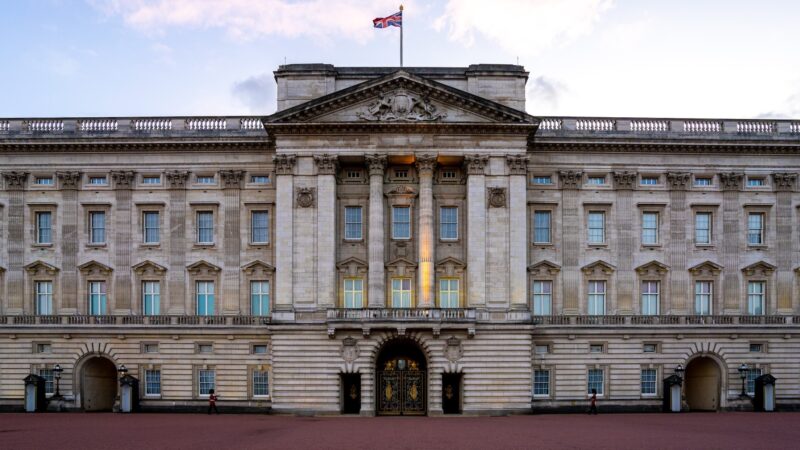Well, they finally got Liz Cheney but she sure deserved what was coming to her. After being thwarted by the President Trump backed conservative lawyer Harriet Hageman from her once safe seat as the Republican candidate and Congresswoman for Wyoming’s sole congressional district, Cheney now finds herself in the wilderness amongst an array of anti-Trump Republican candidates who have been falling like flies in recent Republican primary races for Congress.
The overwhelming paleoconservative pro-Trump wing of the Republican party has taken no prisoners and given no apologies for enacting democratic vengeance on those who they perceive to be traitors to the America First agenda. Decrying many, including Cheney herself, as RINO war-hawks who are more interesting in pandering to Democrats and embezzling public funds into the pockets of the corrupt military-industrial complex than standing up for the American people.
The successes of the America First Republicans have been many, but dethroning Cheney from her seat is being lauded as the crowning jewel of their recent achievements. Not just because she was anti-Trump, but because she belonged to and was essentially the heiress to an ideological sect that these AF Republicans have declared as their public enemy No.1 – neoconservatism.
Neoconservatism is not exactly in vogue in political modernity nor do you hear many politicians and pundits wilfully adhering to the label as a badge of honour. If anything ‘neoconservative’ has become a derivative label to signify an ‘establishment’ Republican who is in bed with organisations and people who lie and work against the American people. However, neoconservatism was once the coolest ideological kid on the right-wing block and had a plethora of supporters who carried the mantle unashamedly. More than that, neoconservatives were a powerful force to be reckoned with at the turn of the 21st century, to such an extent that much of the establishment at that time were self-professed neoconservatives.
How can a group that was riding on such a high and essentially controlled everything worth controlling have floundered and failed to such a large degree? (their ideology now being as respectable as a Pagan nudist in a Catholic Mass). To answer this question, it is important to first understand what neoconservatism is.
What is Neoconservatism?
Neoconservatism found a home in the American and British right-wings during the early 20000s, although its origins largely date back to the 1960s. Those associated with the term often declared that neoconservatism could not be coherently defined, nor had a unified manifesto or creed. It is worth noting that this has led to neoconservatism becoming a largely misused term; often being reduced to an epithet in which to throw at anyone who supports an interventionist foreign policy. However, the idea that neoconservatism cannot be coherently defined is not entirely accurate. One only has to look at the plethora of books, articles and journals that illustrates the existence of a coherent intellectual underpinning of neoconservatism. And no intellectual is more important to neoconservatism than Irving Kristol.
The often titled ‘Godfather of neoconservatism’ aptly summed the political philosophy up as the position a liberal adopts after he is “mugged by reality”. What Kristol is illustrating by this turn of phrase, is that the origins of neoconservatism fundamentally come out of the liberal (by which I mean American progressive) side of the political spectrum.
During the 60s, some sections of American liberals increasingly saw that the promotion of liberal social values, weak foreign policy and the ‘Great Society’, as envisioned by President Lyndon B. Johnson, were proving ineffective and misguided. The New Left counterculture, hippie peaceniks and the policy platform of the 60s Democrat Party caused a group of American liberals to move away from this new ideological consensus amongst the left and encouraged them to form their own amongst the right – namely neoconservatism. But it is specifically the peaceniks that neoconservatives hate the most. In Neoconservatism: The Autobiography of an Idea, Kristol lays the blame at the feet of New Left intellectuals for creating much of the pacifistic feeling that existed during the 60s and 70s – sneering at them as ‘sermonising clerics’ who spend their time inflaming passions without having any real grasp on foreign policy. Neoconservatives saw themselves as the remedy to this epidemic of pacifism pushed forward by countercultural leftists, New Left intellectuals and pro-détente Democrats.
While the 60’s were important in formulating the movements ideological malaise, neoconservatism would not see a rise in interest in it until the end of the Cold War. With the USSR gone and the US reigning as the supreme victor of not just the war against Communism but the 20th century at large, many neoconservatives saw this as their opportunity to solidify the US as the dominant power for the next century. This solidification would come about via the development of a new view on US foreign policy which, by today’s standards, is quite radical.
The 1992 ‘Defence Planning Guidance’ document, which was written by the then Under Secretary for Defence for Policy Paul Wolfowitz, can be seen to be the quintessential source in order to properly grasp what neoconservative foreign policy is all about. The document states:
“Our first objective is to prevent the re-emergence of a new rival, either on the territory of the former Soviet Union or elsewhere, that poses a threat on the order of that posed formerly by the Soviet Union. This is a dominant consideration underlying the new regional defence strategy and requires that we endeavour to prevent any hostile power from dominating a region whose resources would, under consolidated control, be sufficient to generate global power.”
In its purest essence then, neoconservative foreign policy is about eliminating potential threats to American global hegemony. But more importantly, eliminating these threats to ensure that America has no rivals, allowing for it to solidifying itself as the superior and dominant power on the world stage. This desire to eradicate all potential threats to secure the safety and dominance of a nation and its ideology is reminiscent of Trotskyist positions concerning ‘permanent revolution’. A ‘permanent revolution’ is the belief that socialist revolutions need to occur on a worldwide basis to combat global capitalist hegemony and, more importantly, secure the futures of pre-existing socialist states. Mirroring Trotsky, Kristol explained that:
“American democracy is not likely to survive for long in a world that is overwhelmingly hostile to American values, if only because our transactions (economic and diplomatic) with other nations are bound eventually to have a profound impact on our own domestic economic and political system.”
This link between neoconservatism and Trotskyism is not an original formulation. Paleoconservatives such as Paul Gottfried and Pat Buchanan have spent their entire careers evidencing this link between neoconservatism and Trotskyism as well as stressing the fact that various neoconservatives were ex-Trotskyists, including Kristol himself. Due to what paleoconservatives consider to be the Trotskyist and thus revolutionary nature of neoconservatism, they consider neoconservatism to be one of the most dangerous ideological groups in existence, with Gottfried writing:
“What makes neocons most dangerous are not their isolated ghetto hang-ups, like hating Germans and Southern whites and calling everyone and his cousin an anti-Semite, but the leftist revolutionary fury they express.”
Alongside Trotsky, Leo Strauss’s influence on neoconservatism is equally as important and, some would say, equally as controversial. However, unlike the Trotsky association – which neoconservatives unequivocally deny – various neoconservatives state Strauss as being a primary influence on their thinking. Strauss’ belief that liberal civilisation was faltering came from a belief that the West had become increasingly nihilistic – Strauss being heavily influenced by the Nietzschean diagnosis of a post-‘God is Dead’ world. “The crisis of the West consists in the West’s having become uncertain of its purpose,” wrote Strauss, and it was this pessimism that led Strauss to the position that it was only the West’s immense military power that gave it any measure of confidence.
This pessimism bled nicely into neoconservatism and justified their views concerning the need to create a new global hegemony in which America was its lord and master. Furthermore, the obsession with military strength as a means to combat this pessimism is a direct inheritance from Strauss and – as elucidated by the Kristol quote earlier – is a core motivator behind neoconservative views on foreign policy. Neoconservatives are fundamentally pessimists, something that they do have in common with their paleo and more mainstream conservative counterparts.
So, if neoconservatism believes in foreign interventionism as a method in which to establish and maintain American global hegemony and quell the nihilism innate in modern America, the question remains: what does American global hegemony entail? Ultimately, it entails every country adopting the values of the United States i.e. liberal-democratic capitalism. For the early 20th-century historians reading, this may sound similar to President Woodrow Wilson’s position on US foreign policy – you would be correct. Neoconservatives see themselves as being the inheritors of the Wilsonian tradition regarding foreign policy and this fact becomes quite starkly clear when one looks at American involvement in the First World War.
The famous American First World War propaganda poster ‘Make the World Safe for Democracy’ is a great example of the ethos of Wilsonian foreign policy. Enter the war, win it and then use the aftermath to overturn European monarchies so that they can become democracies and thus fall under the sphere of American influence. The austrolibertarian political philosopher Hans Hermann Hoppe elucidates in his book Democracy: The God That Failed the significance of Wilson entering the United States into the First World War:
“World War I began as an old-fashioned territorial dispute. However, with the early involvement and the ultimate official entry into the war by the United States in April 1917, the war took on a new ideological dimension. The United States had been founded as a republic, and the democratic principle, inherent in the idea of a republic, had only recently been carried to victory as the result of the violent defeat and devastation of the secessionist Confederacy by the centralist Union government. At the time of World War I, this triumphant ideology of expansionist democratic republicanism had found its very personification in then U.S. President Wilson. Under Wilson’s administration, the European war became an ideological mission—to make the world safe for democracy and free of dynastic rulers.”
Replace ‘Wilson’ for ‘Bush’, ‘European’ for ‘Middle Eastern’ and ‘dynastic’ for ‘theocratic’ and you have the foreign policy platform of a modern neoconservative. Like Wilson at the end of the First World War, neoconservatives saw the end of the Cold War as an opportunity for a new ‘Pax Americana’. A time in which they could universalise the American system of liberal-democratic capitalism and thus eradicate the potential for any ideological opposition. This idea somewhat echoes Francis Fukuyama’s seminal work The End of History and the Last Man, in which he illustrates, via the use of a Hegelian historical framework, that liberal democracy has emerged as the final and universal form of human governance, with the United States as its custodial head. Neoconservatism (a label Fukuyama once associated himself with), via American military involvement abroad, simply wishes to bring about this new American-dominated epoch closer to the present.
Interventionism for the sake of strengthening and maintaining American global hegemony isn’t the only element of neoconservatism that makes it unique from regular American conservatism. In the words of Ben Wattenberg (a key neoconservative intellectual), neoconservatives also believe in a “muscular role for the state” at home. Hence, neoconservatives advocate for sizeable welfare states along with heavy regulation and taxation of the economy to ‘rig’ capitalism in the manner they wish it to operate. To use the language of James Burnham, one can describe neoconservatives as being the rightist torchbearers of the managerial state that began under FDR via their wish to maintain and even expand the post-Second World War welfare-warfare regulatory state. While a jaded right-libertarian like myself finds this abhorrent, neoconservatives do not share the libertarian fear of state power, as Kristol wrote:
“Neoconservatives are impatient with the Hayekian notion that we are on ‘the road to serfdom.’ We do not feel that kind of alarm or anxiety about the growth of the state in the past century, seeing it as natural, and indeed inevitable.”
Authoritarianism, welfarism, managerialism and, most importantly, a pessimistic belief in military intervention as the tool in which to promote and enforce American ideals abroad and secure American dominance internationally are all core elements of what defines a ‘neoconservative’. But while these ideas were being developed in the 60s and thereafter, it wasn’t until the dawn of the 21st century that neoconservatism would find its hands tightly wrapped around the levers of power.The Ascendancy of Neoconservatism
When George Bush Jr took his oath of office in January 2001, it was not thought that he would become a president known for foreign wars and the growth of the American welfare-warfare state. Bush’s candidacy for president did not chest thump about the might of the American military, nor did it view military intervention as the sole way in which America should conduct itself on the international stage. Nor was Bush particularly authoritarian, at least in comparison to his contemporaries. As Stefan Halper’s book America Alone: The Neo-Conservatives and the Global Order highlights, Bush’s platform on foreign policy was originally in direct contradiction to neoconservatism. Many neoconservatives were so opposed to Bush that some ended up funding and supporting Bush’s primary opponents such as John McCain (a long-time icon of the neoconservative right) and stressed amongst neoconservative allied Republicans that “getting into bed with Bush is a mistake”. However, once it was clear Bush had won the candidacy, and later the presidency many neoconservatives flocked around him and were overjoyed. They now found themselves away from the think tanks and university campuses they resided in and finally within Washington’s halls of power; taking key positions in the Pentagon, the Vice President’s Office, and the National Security Council.
Vice, a film about the life and career of Vice President Dick Cheney, perfectly illustrates the extent to which neoconservatives were now in control. In one memorable scene, Cheney (played by Christian Bale) signals to his Chief of Staff Scooter Libby to explain the “lay of the land” of the Bush administration to his new team. Libby gleefully highlights how, thanks to the incompetency of Bush’s team, Cheney-allied neoconservatives now ruled the roost. Paul Wolfowitz, Donald Rumsfeld, John Bolton, David Addington and the Vice President’s Daughter Liz Cheney (remember her?) to name but a few, formed core parts of the new neoconservative regime. From the State Department to the Pentagon to the Oval Office itself, neoconservatives now had unobstructed access to the steering wheels of power that would allow them to drive the American state in the way they saw fit. The neoconservative state had finally arrived.
However, one crucial part of the puzzle was missing – an excuse. The neoconservatives couldn’t swing the American state in the manner they saw fit without a viable reason. After all, their policies and ideas would prove immeasurably unpopular with the general public and indeed other members of the political class. Especially considering the administration was already perceived to be on a knife-edge after only winning the election by 537 votes. So, they simply bided their time until an opportunity presented itself.
Luckily for the neoconservatives now riddled throughout the Bush administration, they did not have to wait for long.



